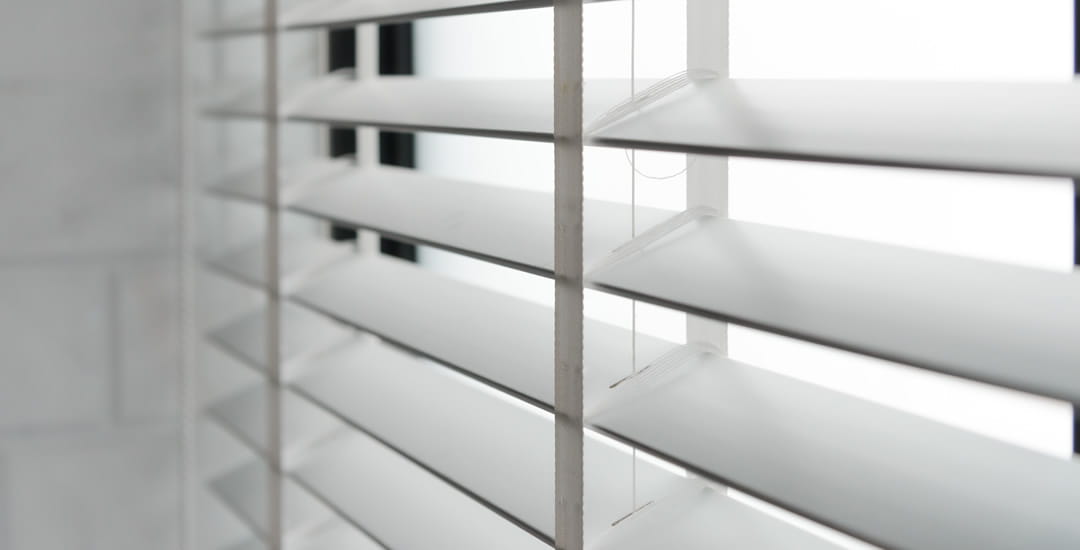
There are a range of factors to take into consideration before you buy, including whether faux-wood blinds are actually suitable for the window and task at hand.
So, what should I look for in faux-wood blinds? Suitability, quality, and functionality for starters. However, even details like what slat size you choose should be considered with care too, and then you get to go down the final rabbit hole that is the colour, style, and finish of your blinds as well!
This blog post will tell you what to look for in faux-wood blinds.
What to know before you buy faux-wood blinds
Here are a few points to get you started; I’ll cover each of them in more detail later on.
- Faux-wood blinds might not be suitable for larger windows.
- Large faux-wood blinds can be somewhat heavy to operate.
- They’re not suitable for use in conservatories, or very close to a radiator or other source of significant heat.
- The quality of faux-wood blinds can vary considerably across different retailers.
- Faux-wood blinds are fire retardant.
- Faux-wood blinds are waterproof.
- Faux-wood blind slats come in various different widths (or depth perhaps, the measurement from the front of each slat to the back of it) and how the blind looks and how well it suits your room or window is partially determined by making the right choice of slat size.
What should I look for in faux-wood blinds in terms of their suitability for the window and room?
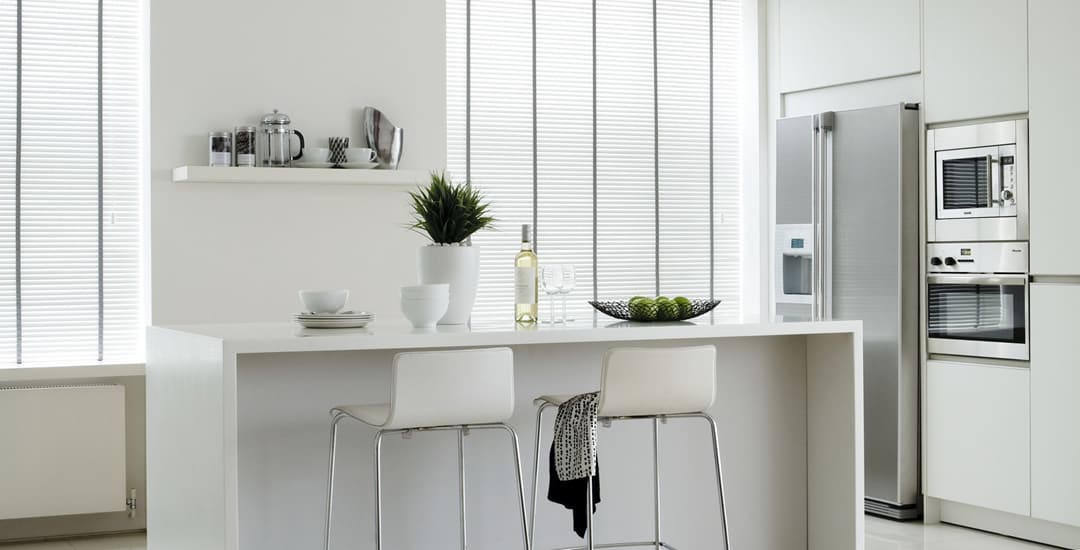
This is a sensible starting point, and will ensure that you don’t fall at the first hurdle!
Faux-wood blinds and high temperatures
First up. Faux-wood blinds are probably the toughest and most hardwearing type of blind of all; apart from if exposed to extremes of heat, in which case they’re a terrible disappointment and will absolutely let you down. Now, when I say “extremes of heat,” I’m talking 50 degrees Celsius or above, which most of us would fairly consider to be too hot for us humans, never mind a blind.
If you’re struggling to envision how a blind might ever come to be exposed to this sort of temperature in the average UK home, this is reasonable as it’s vanishingly unlikely to happen for most of us and in most rooms.
That said, if you have a conservatory that functions as most of them do as a total suntrap and that consequently heats up like a sauna unless you block the sun, faux-wood blinds would not be your best choice for blocking said sun.
The blinds themselves might consistently be exposed to temperatures over 50 degrees in the summer when the effect of direct sun is amplified by the windows, and this could cause your blinds to warp or bend over time.
The same applies if your window is directly and closely positioned over a radiator that kicks out significant amounts of heat; which, if you think about it, is a terrible design flaw on the part of your home’s architect/builder, as putting a radiator under a window really only serves to ensure that the heat you’re paying for zooms straight up out of said window without paying any dues to its intended role of heating the room first.
Basically though, don’t use a faux-wood blind in a position where it’s going to be exposed regularly or for prolonged periods of time to insane levels of heat.
Faux-wood blinds are quite hefty
Secondly. Faux-wood blinds are very hench; they can and will tolerate a reasonable amount of being hit by children wielding drumsticks and the like. This is because they’re made of fairly thick, rigid PVC; and this is significantly chonk and quite weighty.
This means that faux-wood blinds top out in terms of the maximum size they can realistically be sold in, before they become too heavy to ship and hang safely, and potentially, even too heavy for the wall intended to support them.
Towards the top of the viable range of sizes in which faux-wood blinds can be made, they may become somewhat heavy to operate, although the maximum size that we offer ours in is designed to be comfortable for virtually anyone with normal levels of upper body strength, even if you never eat your spinach.
That said, they will still like for like be slightly heavier to operate than equivalent sized real wood blinds, which are themselves heavier than each of the other types of blinds in the wider UK blinds family.
If one of the points raised here has given you pause – heat-related issues or weight – you might want to look at real wood blinds instead, which are both lighter and more tolerant of extreme heat. (However, real wood blinds are slightly more costly, and also, not waterproof.)
Quality: What to know before you buy faux-wood blinds
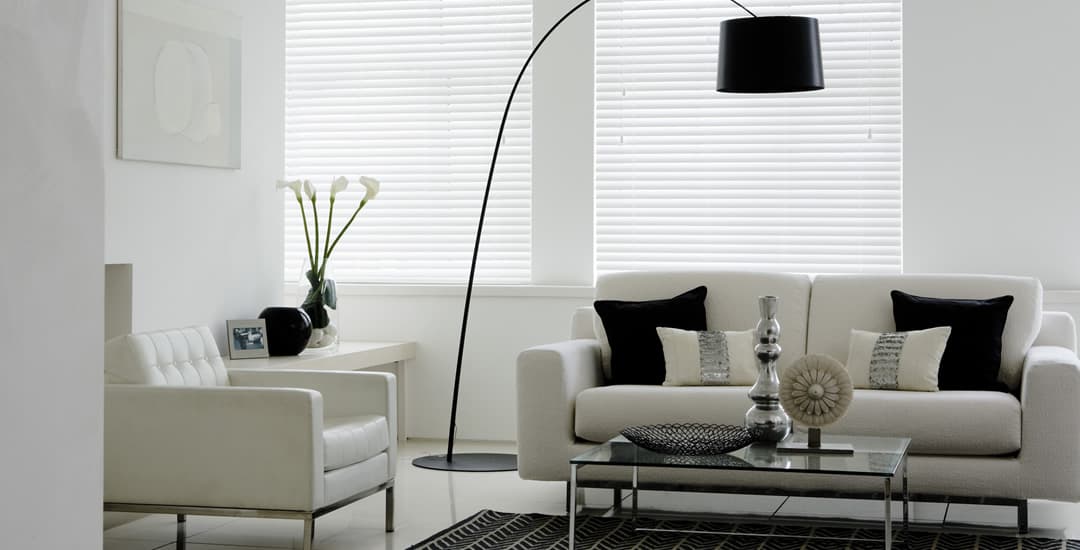
As is the case for anything, the quality of faux-wood blinds can vary considerably across the market as a whole.
Our own English Blinds faux-wood blinds, which are designed and fabricated to order in-house here in Solihull, are at the top of the quality scale, so you’re safe with us (“well she would say that, wouldn’t she”)…
Also, we charge around the national average for high quality made-to-measure faux-wood blinds too, as opposed to charging like an angry rhinoceros just because we’re the best.
The headrails of our faux-wood blinds are reinforced for additional strength and rigidity and to ensure that they do not bow under the weight of the blind; this is not the case for cheap readymade faux-wood blinds, nor even all made to measure ones.
Our faux-wood blinds are also fire-retardant, treated with a special UV-resistant coating, incorporate excellent quality working parts and mechanisms, and are hand-finished and checked by a real live human before they’re let loose into the world.
You could also literally drown them in the bath and they’d be absolutely fine, as PVC faux-wood blinds are waterproof, which makes them super-easy to keep clean!
Faux-wood blinds and their functions and limitations
Faux-wood blinds are slatted, which means they can be used to filter light and control privacy with a fine degree of precision, allowing you to see out and enjoy the view without either going sun blind, or allowing others to see in.
The fact that they’re waterproof (with the exception of the fabric ladder tapes that cover their lift cords) also means that they’re suitable for use in kitchens and bathrooms; as well as being a good choice for any other room or scenario in which the blind might get splashed or dirty and need washing, like for children’s rooms, or a room someone smokes in.
One point to note about faux-wood blinds and something they don’t do, is achieve a full 100% blackout effect in the room. The slat material of faux-wood blinds is itself totally impermeable to light, but the small holes that their lift cords pass through do allow pinpricks of light to get into the room.
The effect of this is usually so minimal that if you test it out, you might wonder why I even bothered to mention it at all; and this reason is because I am a real people-pleaser, and also don’t enjoy having to deal with annoyed aftermarket customer feedback.
What should I look for in faux-wood blind slat size options?
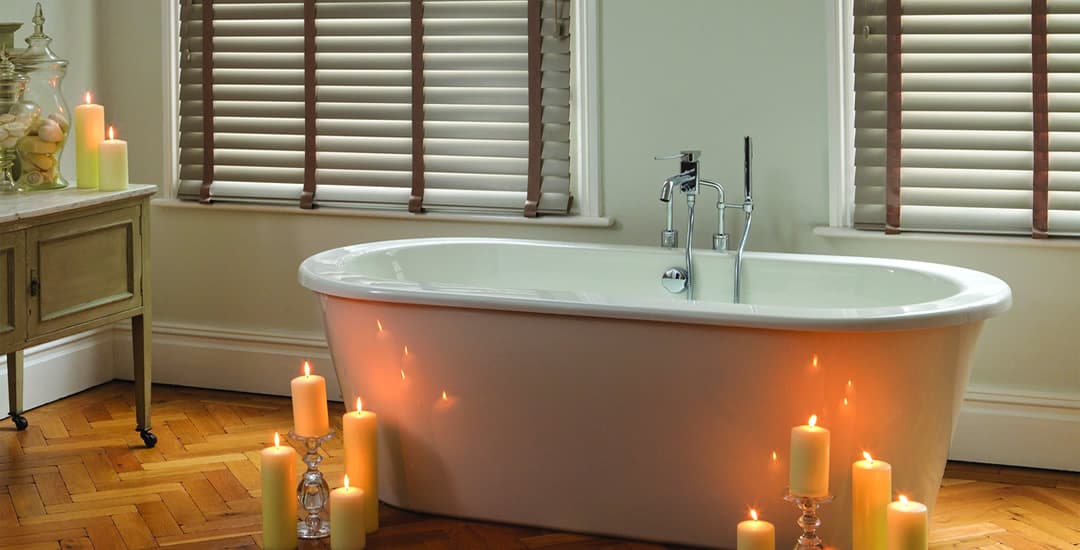
You are given a couple of options for the size (depth) of the slats of your faux-wood blind, and this can stop many people short; why are there options, what does this mean, which one is best, does it actually matter?
There are a few things to bear in mind here, with implications for your ultimate choice.
Your choices for faux-wood blind slat sizes are 50mm/5cm and 35mm/3.5cm respectively, which, really not a lot in it, is there?
But still. Wider 50mm slats will allow you to see more of what’s going on outside when the blind is down and the slats are tilted, while 35mm slats will keep more of the light out when arranged in the same configuration.
In terms of visuals, for large windows/blinds, the 50mm slats might look more in balance, with masses of rows of 35mm slats looking a little busy.
For smaller windows, large 50mm slats can look somewhat out of proportion and mess up the perspective of the room to an extent.
These latter points are purely down to your own personal perception and choice, however.
The colour, style, and finish of faux-wood blinds
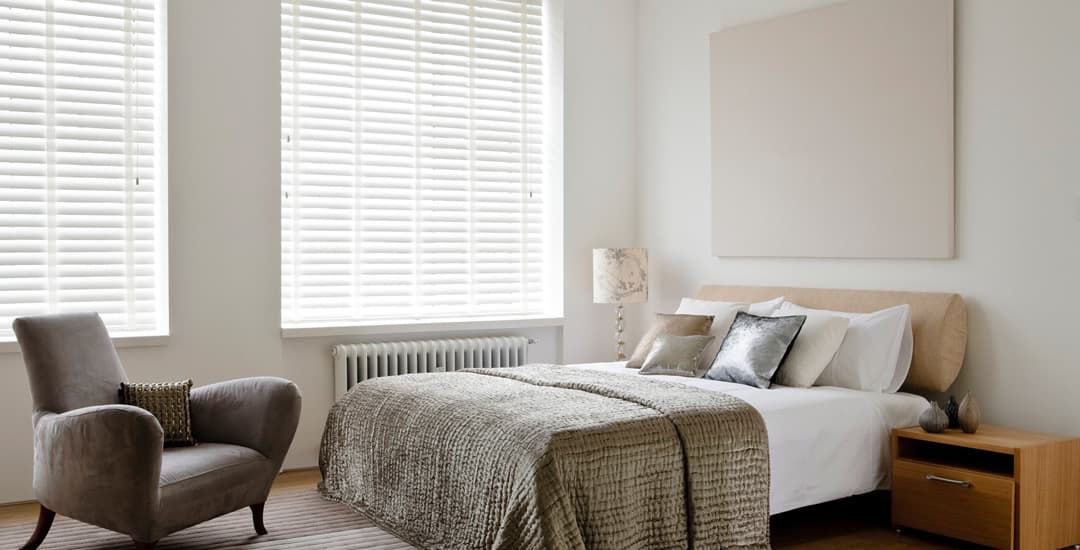
There are lots of options for the colour, style, and finish of faux-wood blinds, ranging from grained slats designed to emulate real wood of various types, to painted finishes in whites and neutrals to bright and bold colours, in either matt or gloss paints.
You might also want to consider choosing faux-wood blinds with contrasting ladder tapes, to add a pop of colour or to add depth and interest to the blind, or support a wider colour theme in the room.
Any more questions about what to look for in faux-wood blinds?
If there’s anything you want to know about faux-wood blinds that I haven’t covered above, or if I’ve chewed up any part of the explanation badly enough that it doesn’t make sense and you need some clarification, please feel free to let me know and I will get back to you sharpish.




